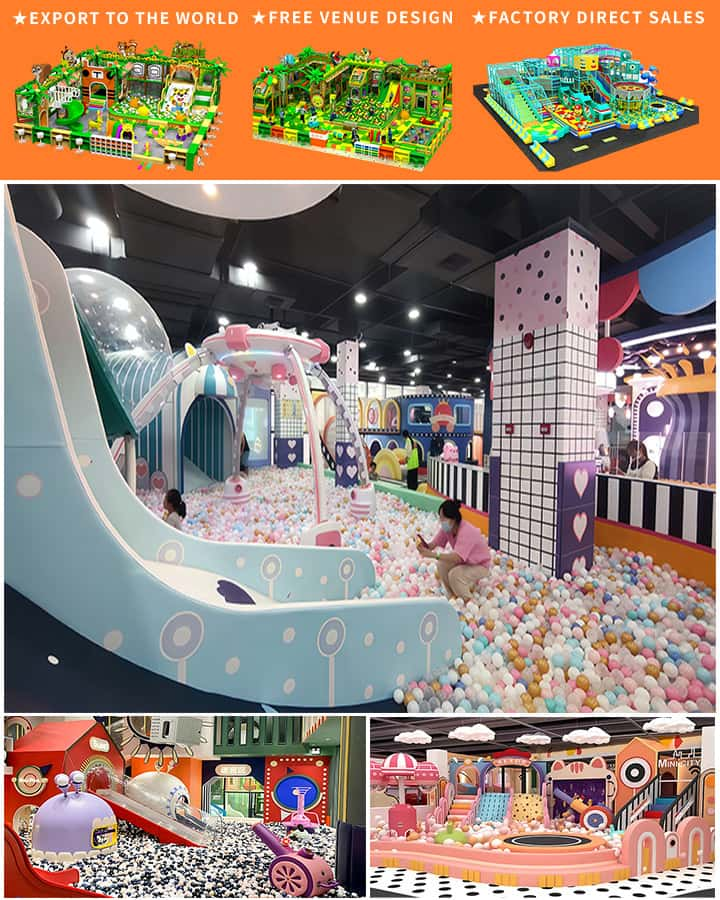In recent years, there has been an increasing awareness of the importance of inclusive play environments for children with disabilities. Indoor play equipment designed specifically for disabled children not only fosters a sense of inclusion but also supports their physical, emotional, and cognitive development. As society continues to advocate for equal opportunities for all, innovative indoor play solutions have emerged, ensuring that every child, regardless of their abilities, can enjoy playtime to the fullest. This article explores various types of indoor play equipment tailored for disabled children, highlighting how these innovations promote joy and development.
Adaptive Swings and Seesaws
One of the simplest yet most effective forms of play equipment for disabled children is the adaptive swing. Unlike traditional swings, adaptive swings are equipped with features such as harnesses, seat belts, and specialized seating to support children with different physical needs. These adjustments ensure that even children with limited mobility or balance issues can safely experience the joy of swinging. Similarly, seesaws have been adapted to include secure seating and weight distribution mechanisms, allowing children of varying abilities to participate in this classic playground activity.
Sensory Play Spaces
For children with sensory processing disorders or autism spectrum disorder, sensory play spaces offer an ideal environment for exploration and stimulation. These spaces often feature soft, padded flooring and a variety of sensory-rich activities such as touch walls, light-up panels, and water tables. The tactile experiences provided by these installations help develop motor skills, enhance sensory integration, and provide a soothing escape for children who may feel overwhelmed in more chaotic environments.

Climbing Structures with Support
Traditional climbing structures present significant challenges for children with mobility impairments. However, modern designs have incorporated features such as ramps, platform lifts, and handrail systems to make climbing accessible. These adaptations enable children with physical disabilities to experience the thrill of climbing while building strength, coordination, and confidence. Moreover, some climbing structures include adjustable difficulty levels, allowing each child to engage at their own pace and comfort level.
Interactive Learning Panels
Interactive learning panels are another excellent piece of indoor play equipment designed for disabled children. These panels are equipped with buttons, levers, and interactive screens that encourage cognitive development through play. Children can explore concepts like cause and effect, problem-solving, and basic mathematics in a fun and engaging manner. By integrating educational content with play, these panels ensure that learning is both enjoyable and accessible for children with diverse abilities.
Inclusive Slides
Slides are a staple on any playground, but they often pose accessibility challenges for disabled children. Modern inclusive slides address these issues by incorporating wider entry points, lower platforms, and gentle slopes. Some slides even feature side rails or handlebars for added security. By making slides more accessible, designers ensure that every child can experience the sheer delight of sliding down into a safe, cushioned landing.
Customized Play Areas
Finally, customized play areas represent the pinnacle of inclusive design. These areas are meticulously crafted to cater to the specific needs of individual children or groups of children with particular disabilities. Whether it involves creating wheelchair-accessible tunnels, installing adaptive gym equipment, or designing multi-sensory play zones, these custom play areas provide unparalleled opportunities for fun and development.
Conclusion
Indoor play equipment for disabled children represents a crucial step towards achieving a more inclusive society. By embracing innovative design and thoughtful adaptation, we can create environments where every child has the chance to play, learn, and grow. These specialized play areas not only bring joy and excitement but also support the overall well-being and development of disabled children. As we continue to prioritize inclusivity, let us envision a world where every playground is a place of boundless possibilities for all children.




